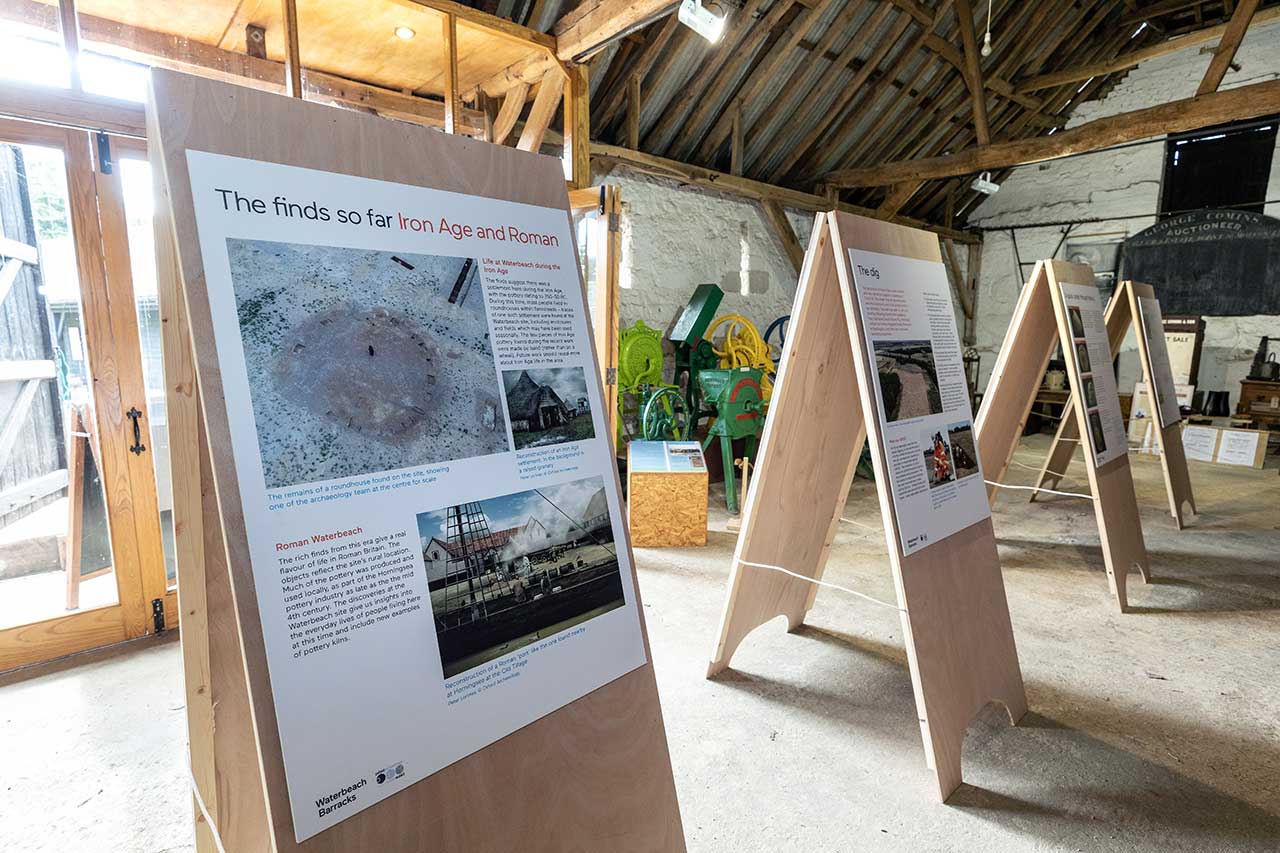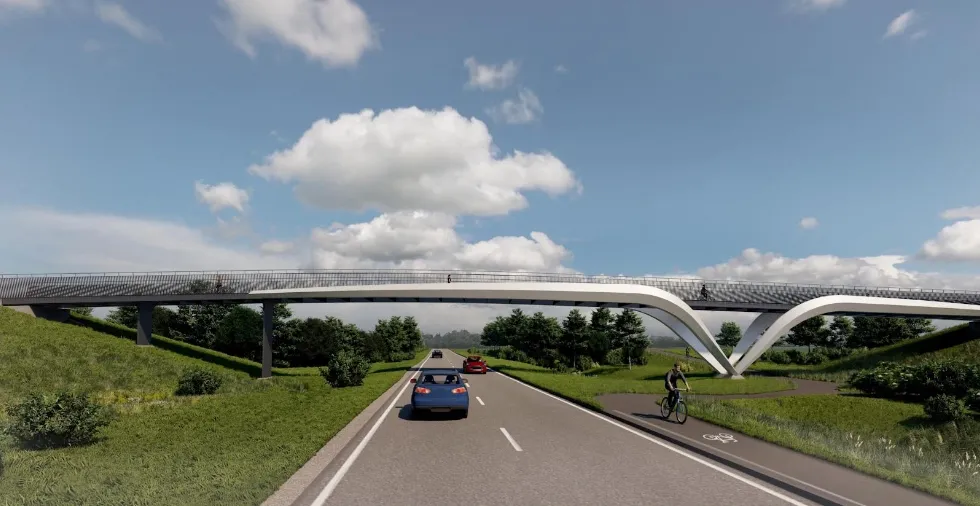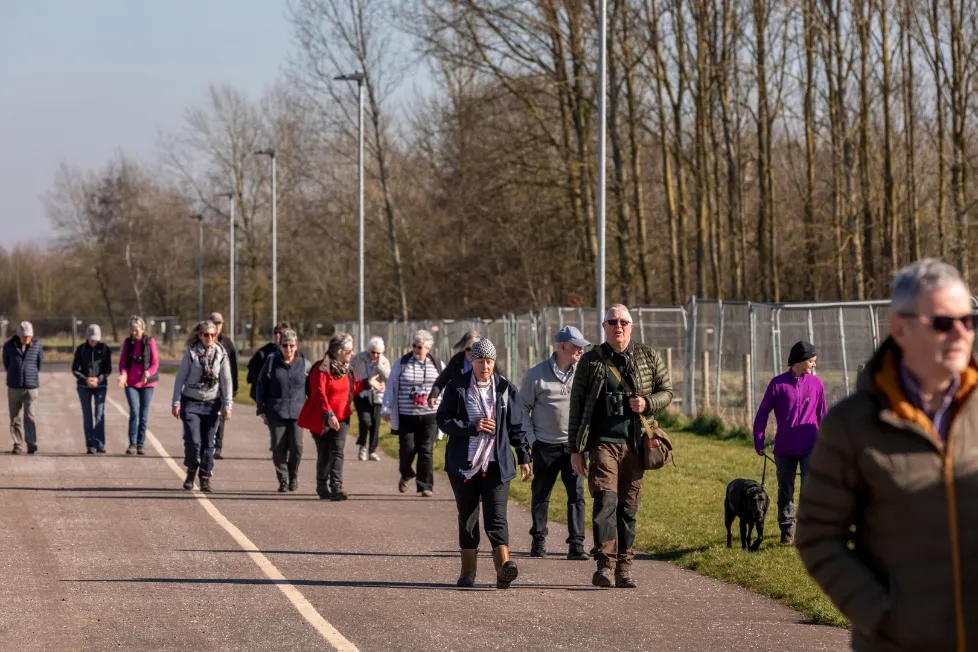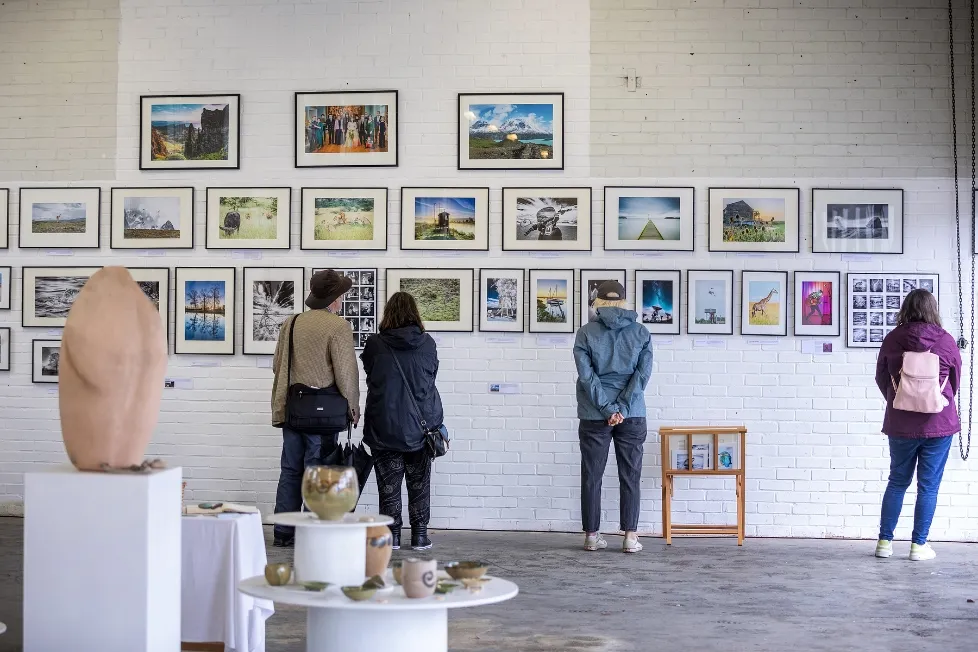The exhibition will share the highlights of the first round of archaeology carried out last year, before work began to transform the brownfield site into a new community. The dig was carried out under strict Covid guidance, which meant all community and school engagements had to be cancelled, so the exhibition is the first time the team has been able to share the findings.
Historic location
The Waterbeach development is located at the junction of two important Roman regional transport links: the Roman road known as Akeman Street, which connects Ermine Street near Wimpole Hall, runs along the alignment of Mere Way and the broad route of the A10 up to the North Norfolk coast; and the Old Tillage Roman canal.
Until recently it was thought the canal at Waterbeach was the southernmost section of the Car Dyke Canal – one of the largest engineering feats carried out by the Romans in Britain – connecting the River Cam to the Great Ouse and on to Peterborough and Lincoln. Recent research however suggests that the feature is part of the “Old Tillage” – a local network connecting the River Cam to the Old West River and the Fens, and used for moving goods around for trade.
These connections made the area an appealing location for living and working, and the archaeology being undertaken is helping piece together the jigsaw of Waterbeach Barracks’ past.
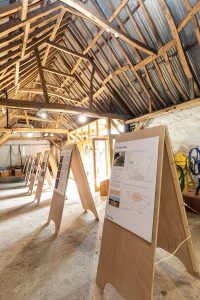
Revealing finds
At the exhibition, you can find out more about the dig and read about the artefacts uncovered – from Roman pottery and coins to an amazing Bronze Age palstave axe-head – and what has been discovered so far about life there during the Iron Age and Early Roman period.
Steve Archer, Chair of Trustees said: “The Trustees, staff and volunteers of the Farmland Museum at Denny Abbey are delighted to be hosting the Waterbeach Barracks Archaeology Exhibition in our 17th century stone barn. The storyboards and exhibits from the dig add to the early history of the site and surrounding area giving our visitors a glimpse of what was happening here before even the Benedictine monks, Knights Templar or Poor Clare nuns were occupying the site.
“This is a great opportunity for local people and visitors from further afield to learn more of the earlier history. Our thanks to Urban&Civic and Oxford Archaeology East for allowing us to host this important exhibition.”
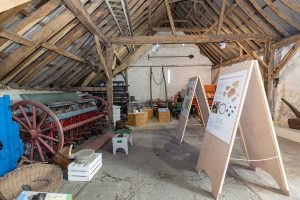
More digging ahead
The exhibition comes as the development is gearing up for its second round of archaeology, which will last for the next 6-8 months. With Covid restrictions lifting, the exhibition and information on the development’s website will also promote opportunities for people to sign up to volunteer with the archaeologists or find out more through site visits and community events.
Rebecca Britton, from Urban&Civic, said: “Waterbeach Barracks is a historic place with rich layers of heritage that span millennia. While the recent military past is something that we are all familiar with, this work has enabled us to dig deeper into the past, find out more about how our predecessors lived and what they did here.
“Covid restrictions meant we could not get the local community involved in the first dig, so this exhibition gives us a chance to share what has been found so far and promote the opportunities to get involved in the next stage of the archaeology later this year. We hope we can come back and share further finds and information on a regular basis as the development rolls out.”
Stephen Macaulay from Oxford Archaeology, who have been working on the project since 2014 and who has personally been involved in exploring local Iron Age and Roman history around Waterbeach for the past 25 years, added: “This first round of archaeology was carried out close to the old Roman Road and offers a real insight into life here at the height of Romano-Britain in the 2nd Century AD, with personal items like bracelets and brooches, alongside the everyday insight of living, eating, farming and even dying: with evidence of burials and cremation caskets. The next round of archaeology will include what we expect to be more of the Roman settlement and its Iron Age precursor, as well as an Anglo-Saxon Hall. We hope we can involve people in the digs which we were not able to do last year due to Covid restrictions.”
The Farmland Museum is open 10am to 4pm Thursday-Sunday until 31 October and the Waterbeach Barracks archaeology exhibition can be found in the Stone Barn until 21 October. More information about the exhibition can be found at www.dennyfarmlandmuseum.org.uk and www.waterbeachbarracks.co.uk/archaeology where you can also sign up for information on future community archaeology events.
This is a great opportunity for local people and visitors from further afield to learn more of the earlier history.
